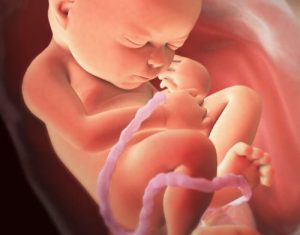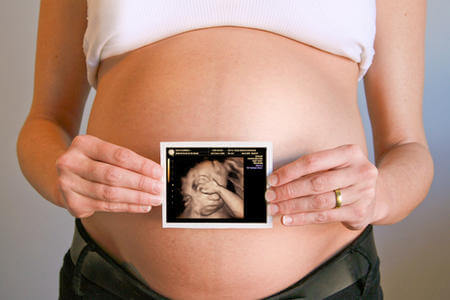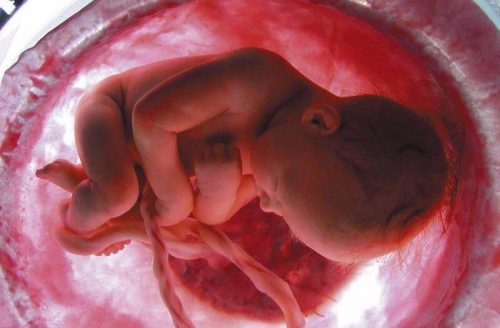Vital Support System for Your Baby: The Placenta, Umbilical Cord and Amniotic sac

A baby’s development in the womb requires a vital support system composed of the placenta, umbilical cord, and amniotic sac. This system is responsible for maintaining the baby’s life, and also allows for the baby’s growth. Each part of this trio has a specific and indispensable function for the pregnancy.
Although this system is something that all developing babies have in common, these organs do not ever intervene in any other process. The structure only forms when gestation begins to evolve. Each one of these three elements forms exclusively to support the life of the growing fetus.
If the mother has another child, she will develop a new support system for that baby. If the mother becomes pregnant with twins or with multiple babies, the sharing of the placenta may occur if the babies are identical. In the majority of cases of twins or multiple babies, each baby has his or her own amniotic sac and umbilical cord. Only in cases of identical twins can there exist a sharing of any of these organs.
The placenta, umbilical cord and amniotic sac: What are they and what is their purpose?

The placenta
The placenta is an organ that sticks to the uterus and connects to the baby via the umbilical cord. The function of the placenta is that of providing the pregnancy hormones, for example, the human chorionic gonadotropin hormone (hCG). It also produces progesterone and estrogen.
This organ carries the responsibility of creating the link between mother and baby, as far as blood supply is concerned. The blood that circulates through the fetus comes from the mother, but is operated by the placenta. This blood is the channel that transfers oxygen and nutrients from the mother to the fetus.
Before you were conceived, I wanted you. Before you were born, I loved you. Before you were an hour, I would die for you. This is the miracle of love.
-Maureen Hawkins-
The baby’s waste is also transported by the blood. However, these two products do not mix together, thanks to the action of the placenta.
After the baby is born, the placenta is expelled. Its work is completed at that point. This process is known as “placental expulsion”, or “afterbirth”. This vital support system for the fetus can bring about serious problems for the developing baby if it fails at any point during the process.
As your unborn baby develops in the womb, the pressure on the placenta increases, and it is common for this to cause bleeding and other complications.
The umbilical cord

The umbilical cord is the is the vital connection line between the placenta and the baby. As we have already stated, the placenta is a sort of center of operations between mother and baby. The umbilical cord is responsible for carrying back and forth the necessary information, like a bridge.
This organ is composed of blood vessels, which are a pair of small arteries and one large vein. The two arteries are responsible for carrying blood to the placenta, while the vein is responsible for taking the blood back to the fetus.
An umbilical cord can normally grow to measure up to 60 centimeters. The purpose of its length is to allow the baby to move freely. Furthermore, its composition allows it to be resistant to potential damages caused by the baby’s movements.
During labor, the umbilical cord comes out connected to the baby and to the placenta, not to the mother. The cord is cut, and most of it is discarded. The other end heals on the baby’s skin, leaving behind the belly button.
The yolk sac, or amniotic sac

The yolk sac is an organ that is full of amniotic fluid. Its function is to harbor the fetus during the months of gestation. It serves as a shelter, and playroom and a home for your baby in an indispensable way. The baby develops inside the amniotic sac within the conditions that nature itself determines.
The composition of the amniotic sac is ideal because it allows the sac to remain suspended, while at the same time allowing for mobility and protection against external actions. The yolk sac maintains a temperature of approximately 37,6 ºC, or 99,7 ºF, in order to achieve ideal conditions for the baby. To be most effective, the temperature in the amniotic sac needs to stay slightly above the mother’s own temperature.
The amount of liquid present in the amniotic sac increases as the baby develops. At 10 weeks of gestation, there is an estimated 30ml. of fluid. By around 36 weeks, the quantity will have increased to reach approximately 1 liter.
This liquid does not leave the mother’s body until the time comes to give birth. In fact, it comes out before the baby and, when it does, the baby finds itself outside of a liquid environment for the first time. Just the same, the baby continues to be connected to placenta and the umbilical cord, which continue to serve as the baby’s vital support system.
All cited sources were thoroughly reviewed by our team to ensure their quality, reliability, currency, and validity. The bibliography of this article was considered reliable and of academic or scientific accuracy.
- Latarjet,M; Ruiz Liard, A. (2008). Anatomía humana. Editorial médica panamericana. 4ta edición. Tomo 2.
- Sadler, T. W. (2001). Embriología médica. Langman.
- Olaya-C, Mercedes. (2013). Comprendiendo el cordón umbilical. Revista latinoamericana de patología. 51. 200-5.
- Roa, I.; Smok S. C. & Prieto, G. R. Placenta; anatomía e histología comparada. Int. J. Morphol. 30 (4): 1490-1496, 2012.
This text is provided for informational purposes only and does not replace consultation with a professional. If in doubt, consult your specialist.
